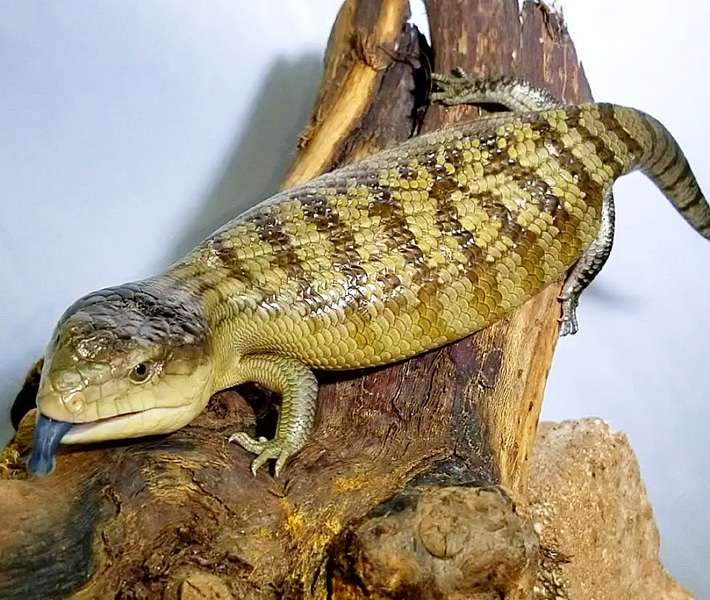
Description:
Scientific name: Tiliqua scincoides chimaera
Life span: 15-20 years
The 18–24” long Tanimbar blue tongue skink has a triangular head, long, heavy body, small yet powerful limbs, and blue tongue. They are renowned for having scales that are especially tough and shiny and that are often silver, gray, or yellow in color.
Native Region/Habitat
Indonesia is home to the tanimbar blue tongue skink. These lizards live in a tropical, humid environment as opposed to their Australian cousins.

Behavior:
Skinks with blue tongues from Tanimbar live mostly on land and are not particularly good climbers or swimmers. Although captive-bred individuals appear to be considerably more tolerant of people than wild-caught individuals, wild-caught individuals are known to have a feisty and even hostile attitude.
Care As a pet/In captivity:
Housing: Leading contemporary blue tongue skink husbandry authorities advise maintaining blue tongue skinks in an enclosure that is at least 120 gallons in size (48″L x 24″W x 24″H), preferably more. The enclosure should have sufficient ventilation and open from the front for simple access.
Heating: These blue tongue skinks are cold-blooded, they must migrate between environments with varying temperatures in order to maintain a constant body temperature. In the wild, blue-tongued skinks become warm via sunbathing. They thrive in captivity with a halogen heat lamp.
- Surface temperature for soaking: 100–105°F (38–41°C).
- Cool zone temperature: 71–80°F (21-27°C)
Humidity: The ideal ambient humidity for tanimbar blue tongue skinks is between 60 and 80 percent, as determined using a digital probe hygrometer with the probe placed on the ground on the cool side of the enclosure. Anytime the humidity is persistently greater or lower than this range, your pet could become ill.
Food: Because they are omnivores, blue tongue skinks require both animal and plant-based diets to meet their nutritional requirements. Age affects how much and how frequently people need to eat:
- Feed infants (up to 3 months old) every day.
- Feed babies (ages 3 to 8 months) three times per week.
- Feed adults and subadults (8+ months) once or twice a week.
Table





